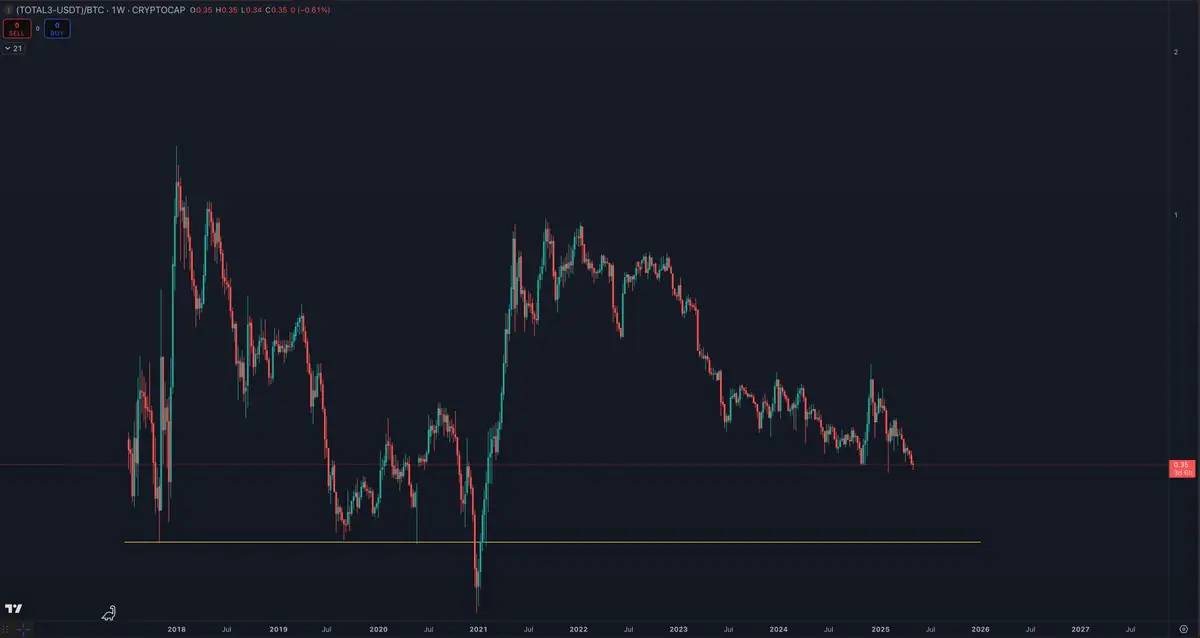In a series of posts on May 8, Cowen pointed out that if Bitcoin is leading global M2 (a broad measure of money supply), it may indicate a looming decline in global liquidity this summer. This potential shift could place pressure on altcoin pairs against Bitcoin (ALT/BTC), which typically suffer when liquidity contracts.
“If BTC is leading global M2, then it suggests global M2 may decline this summer, which could mean ALT/BTC pairs going to the range lows,” Cowen wrote.
“ALT/BTC pairs tend to go down when DXY goes up,” he added, referring to the inverse correlation between altcoins and the U.S. Dollar Index.

A Reversal of Traditional Thinking
Cowen emphasized that while global M2 has traditionally been used to predict Bitcoin’s trajectory, past examples show that this relationship can be misleading. He cited 2018 and 2022 as years when selling BTC based on a peak in M2 would have resulted in exiting near market bottoms.
“I think it’s somewhat unlikely that we can predict BTC’s exact top just by offsetting global M2 by 3–4 months,” Cowen noted.
“I am suggesting that Bitcoin price action tells us where global M2 is headed, rather than global M2 telling us where Bitcoin is headed.”
Implications for Altcoins and Market Strategy
If Cowen’s thesis holds, traders and institutional investors may need to adjust their models. Rather than waiting on macro data to confirm trends, market participants might find valuable foresight in Bitcoin’s price action itself.
For altcoins, especially those paired against BTC, Cowen’s outlook could imply increased downside risk in the near term—especially if a global liquidity contraction does materialize in line with BTC’s early signals.
As macro and crypto continue to intertwine, Cowen’s commentary adds to the ongoing debate over whether Bitcoin is a lagging speculative asset—or a leading macroeconomic barometer.
The post Bitcoin Could Be Leading Global Monetary Trends, Says Analyst appeared first on Coindoo.






.jpg.webp?itok=1zl_MpKg)





 Bengali (Bangladesh) ·
Bengali (Bangladesh) ·  English (United States) ·
English (United States) ·